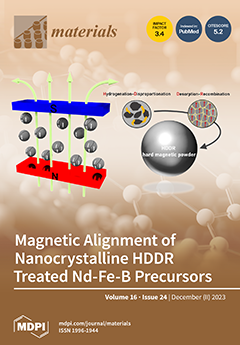Power electronics are becoming increasingly more important, as electrical energy constitutes 40% of the total primary energy usage in the USA and is expected to grow rapidly with the emergence of electric vehicles, renewable energy generation, and energy storage. New materials that are
[...] Read more.
Power electronics are becoming increasingly more important, as electrical energy constitutes 40% of the total primary energy usage in the USA and is expected to grow rapidly with the emergence of electric vehicles, renewable energy generation, and energy storage. New materials that are better suited for high-power applications are needed as the Si material limit is reached. Beta-phase gallium oxide (β-Ga
2O
3) is a promising ultra-wide-bandgap (UWBG) semiconductor for high-power and RF electronics due to its bandgap of 4.9 eV, large theoretical breakdown electric field of 8 MV cm
−1, and Baliga figure of merit of 3300, 3–10 times larger than that of SiC and GaN. Moreover, β-Ga
2O
3 is the only WBG material that can be grown from melt, making large, high-quality, dopable substrates at low costs feasible. Significant efforts in the high-quality epitaxial growth of β-Ga
2O
3 and β-(Al
xGa
1−x)
2O
3 heterostructures has led to high-performance devices for high-power and RF applications. In this report, we provide a comprehensive summary of the progress in β-Ga
2O
3 field-effect transistors (FETs) including a variety of transistor designs, channel materials, ohmic contact formations and improvements, gate dielectrics, and fabrication processes. Additionally, novel structures proposed through simulations and not yet realized in β-Ga
2O
3 are presented. Main issues such as defect characterization methods and relevant material preparation, thermal studies and management, and the lack of p-type doping with investigated alternatives are also discussed. Finally, major strategies and outlooks for commercial use will be outlined.
Full article






